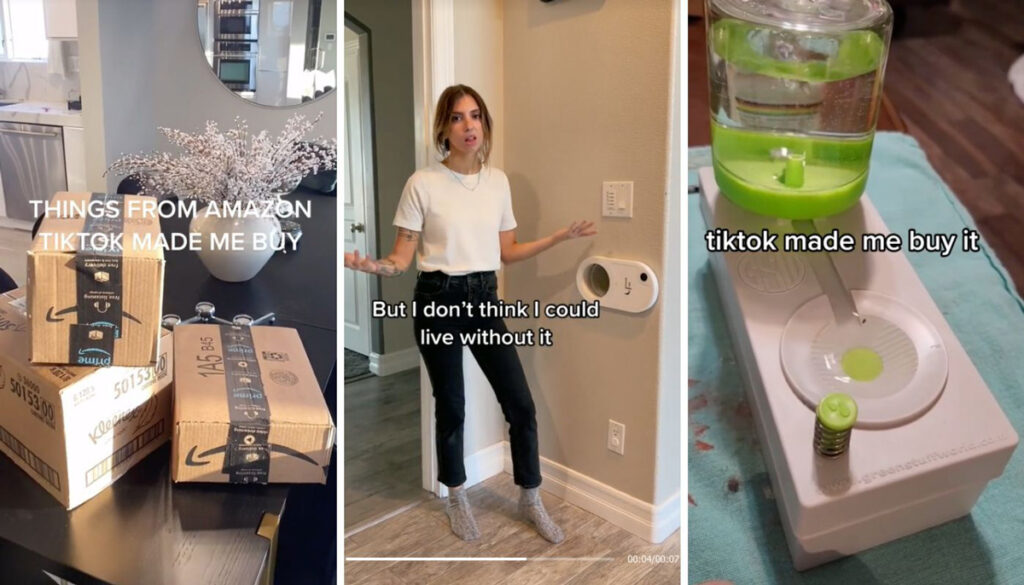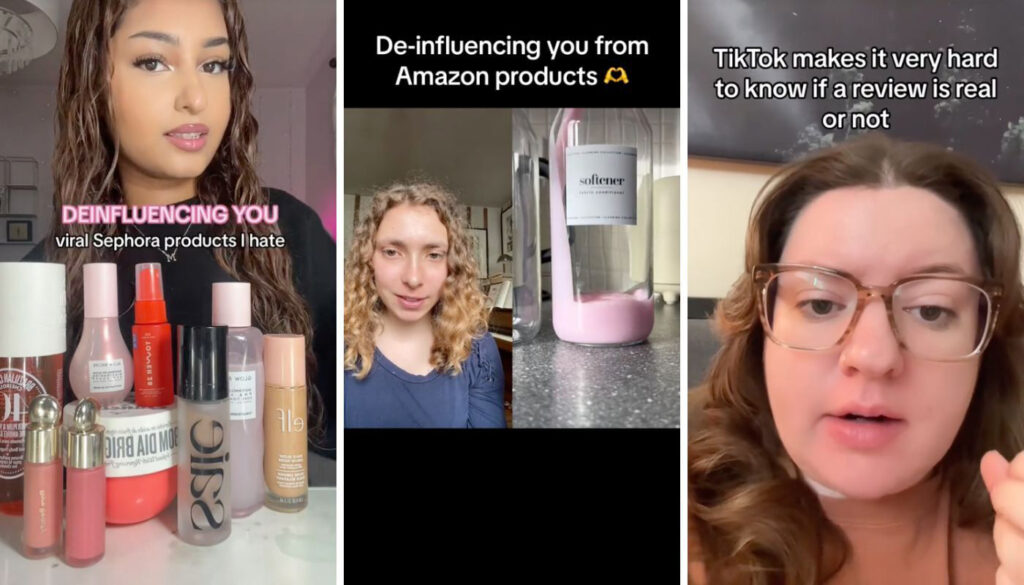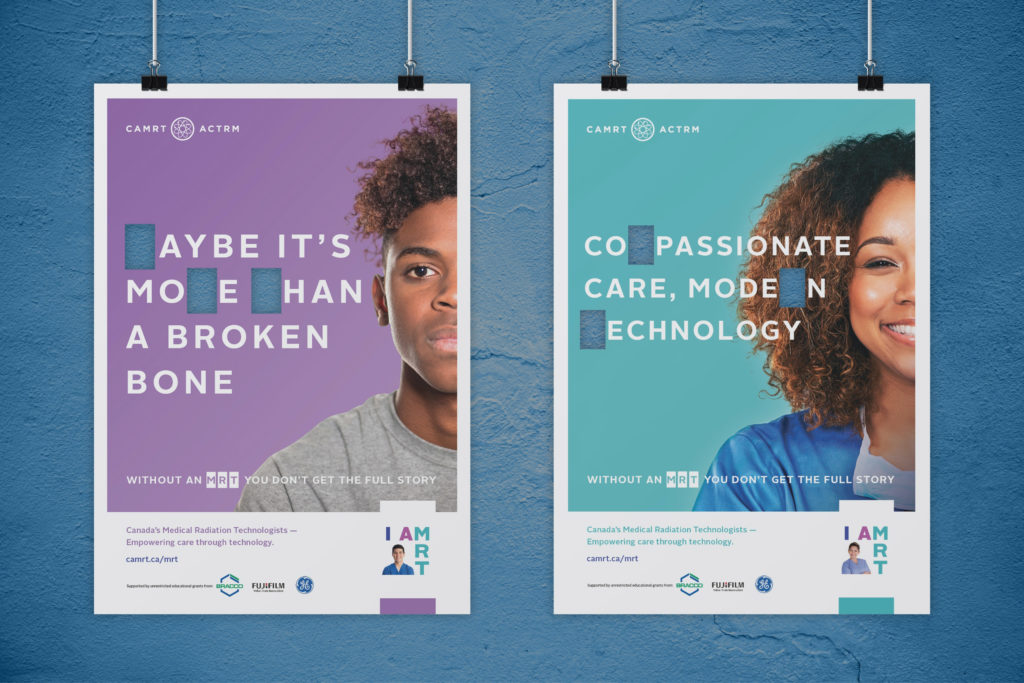TikTok: The Powerhouse Platform That’s More Than Just Dancing
Not sure about you, but I remember when TikTok first came out and I was skeptical. An app where people dance, lipsync, and share short videos? We all saw how that worked for Vine. My hopes weren’t high.
But, as the app started to grow and adapt with its audience, reaching far beyond a silly gummy bear video and expanding into something that became part of our everyday lives, I’m not afraid to admit I was wrong. In fact, you could even go so far as to say I’m a TikTok convert—and not just because a few of my own videos have gone viral.
See, while TikTok is just a singular app, it’s turned into something with many possibilities. Yes, the dancing and lip syncing and Vine-like videos are still a staple, but TikTok has evolved into a platform that can invoke serious shifts in how people spend their money, perceive brands, and consume information.
It can be life-changing.

For example, romance author Colleen Hoover’s books went viral on what’s known as BookTok, and in 2022 she outsold the Bible by at least 3 million units. Her most popular book, It Ends With Us, is also being made into a feature film starring Blake Lively. All because people saw someone else reading her books on TikTok and were swayed into doing the same.
This isn’t to say every video is going to get you millions of sales or conversions. Because they won’t. But they could, and that’s why leaning into what TikTok can offer and using it to help grow your brand can be so valuable.
Let’s explore some interesting insights on how users, especially younger generations, are using TikTok, how the app can influence decision-making, the concept of “influencer fatigue,” and why you should be creating content specifically designed for the platform.

How TikTok is being used
While you may be lured onto the app through the guise of a funny cat video, TikTok is sneakily taking over as a top search engine among younger generations. Almost 3 in 5 Americans use TikTok as a search engine, and a survey from Search Engine Land saw 51% of respondents choose TikTok over Google when it came to their preferred search engine. Why? Three main reasons: results in video format, more relatable answers, and personalized answers.
The app is also being used for product and destination discovery, with almost 75% of Gen Z (those born between 1997 and 2022) users having bought something after seeing it on TikTok and 60% of American TikTok users developing an interest in visiting a new destination after seeing a TikTok video about it. While I could never and will never claim to be good at math, even I know 75% of 1 billion—the number of global monthly users on TikTok—is a big number.
When you also consider that the average user spends an average of over 90 minutes a day on TikTok—which is about triple the amount of time they spend on Instagram—it starts to become more and more clear why being present on the app can make a huge difference.

Influencing spending habits
Individuals are creating entire careers out of being influencers, being sent products by brands to review and share with their followers. Or pushing an Amazon product that sits in their personal “storefront” which means they get paid when people click through from their content and make a purchase.
Think about a product, and it’s probably being pushed by someone on TikTok. Hair care, pet supplies, kitchen gadgets, beauty products, books, an air-powered laundry shoot that sends your clothes to the laundry room and looks like something out of the Jetsons. They’re all there. And people are buying them. In fact, 61% of people say “they trust influencers and brands more than family or friends for recommendations.”
Purchasing influence on TikTok is so common, there’s actually a hashtag dedicated to the practice. #TikTokMadeMeBuyIt has over 60 billion views, and has proven to work for both individuals and brands. In essence, people use the hashtag to either promote a product they want to sell (and in most cases, earn a commission on), or use it to share a review of something they were influenced to purchase from someone else.
If you’re curious you can also read about the TikTok Shop, which allows users in select countries to make purchases directly from videos within the app. It’s not currently available in Canada, but it’s another way for businesses and creators to monetize their content and make the journey from consideration to purchasing much easier for consumers.
Part of it is surely playing into people’s FOMO, or fear of missing out. If everyone has this Stanley tumbler (yes, I have two of them myself but they were gifts!) then I don’t want to be the only one who doesn’t. If we’re all going full-in on the viral Pink Stuff cleaning product, I don’t want to be the only person who hasn’t tried it.
Another part of this is the authenticity, or maybe more accurately the perceived authenticity, of TikTok creators and content. A Nielsen study showed TikTok “users around the globe find TikTok content to be authentic, genuine, unfiltered and trendsetting.” People are leaning more towards the human element, the honest reviews, and the trusted creator components of advertising.

Turning the tables to “de-influencing”
But even seeing all this data surrounding how much people trust influencers, a new trend is starting to emerge on TikTok which is being referred to as “de-influencing.” Anecdotally, people are growing tired of opening a social media app only to be hounded to spend their hard-earned money on another reusable water cup or these leggings which are “sooooo soft and the best things I’ve ever worn!”
The influencer market has become extremely oversaturated, and as Meltwater explores, they’re having a much harder time influencing than before. In what’s being dubbed as “influencer fatigue,” users are finding it harder to connect with creators who don’t share authentic experiences from their lives, or who are pushing people to buy useless products in a veiled attempt at selling them the next best thing.
Within the last couple of years, the #deinfluencing hashtag on TikTok earned hundreds of millions of views as people—specifically unpaid people—shared their honest reviews on products they’d been influenced to buy and regretted. Of course, within that hashtag there’s still a sales tactic. No, you don’t need to buy the $100 leggings, but you could buy the ones I’m selling for $30 instead! But overall, the trend of de-influencing is causing people to take a step back before hitting the purchase button so they can ask themselves, “do I really need this?” It’s creating a lot more intention behind spending.

Leveraging TikTok for brands and advertising
There are a few ways you can leverage TikTok for your brand and advertising, whether it’s paying an influencer to talk about your product or destination, creating organic content from your own channel, or buying ad space for a video that will show up on your target audience’s home page.
Brands are harnessing the power of creator-led content, with Sephora Canada, Sour Patch Kids, Heinz, Nissan, and Canadian Tire being just some of the names on TikTok’s case study page. Even non-profit and government organizations have been able to leverage TikTok to their advantage.
Not everyone has the budget or the resources to be running massive campaigns, however, but that doesn’t mean TikTok isn’t worth exploring. The beauty of the app is the algorithm will (in theory) bring your content to the people who resonate with it the most. The amount of pages I follow from Australia, the UK, the US, and other places across the globe just because the content is engaging is not insignificant. But their content is good, so I continue to interact with them.
During an Ad World session I attended about “TikTok and the Reinvention of Storytelling,” I learned that 79% of users think TikTok is where brands can demonstrate their personality, and 77% of users enjoy seeing “behind the scenes” content from brands. So if a little video about doing parkour on the newly installed carpet is within your capabilities, then it’s at least worth a shot. The North Valley Group, a real estate team in Chico, California, has over 93 million likes on their TikToks—even though the majority of them aren’t directly related to real estate.
Running ads on TikTok
Buying ads is also an option on the platform, and there are many different formats to choose from. The USP or unique selling point of TikTok would be its demographic, which is primarily Gen Z. It’s a great opportunity to reach a younger audience and target your content towards those who may not see it on an older platform like Facebook (25 to 34). In our conversations with TikTok reps, they point out the user experience on the buying side is very similar to Meta, so if you have familiarity with that platform, then making the leap to TikTok could be fairly intuitive.
Something to consider, however, is what the goal of your ad campaign is. In our experiences so far, CPM (cost per thousand reached) from TikTok campaigns have outperformed Meta—think $3.75 on TikTok compared to $10 on Meta. But when you start to look at CTR (clickthrough rate), Meta still reigns supreme. So what does this tell us? TikTok should be used as the engagement or awareness component of a larger campaign. The investment to get clicks or conversions on TikTok is going to be higher than other platforms, so instead of square-peg round-holing it, it’s more worth your while to invest in video content that drives awareness and engagement.
The companies that do see higher clickthrough rates are in the e-commerce realm, which circles back to TikTok’s ultimate buying power. But no matter what format you run, it needs to be engaging and feel organic to the platform. A 2022 report from the digital consumer research firm Bulbshare found 99% of Gen Z consumers will skip an ad if it’s an option, while 81% of consumers trust “real opinions over those promoted by an advertisement.” The more ad-like your content appears, the more likely it is people will skip it.
It all links back to the same thread we’ve seen—authenticity.
What this means for you (and how we can help)
TikTok’s unique algorithm means you can take risks without much risk. Videos that don’t perform well aren’t remembered (as long as the reason they flopped isn’t because they were offensive) because there’s so much content to consume.
When it comes to the actual creation of the content, consider this stat from the same Ad World session: 73% of users believe brand TikTok videos need to feel homemade and real. Overproducing, overscripting, and overthinking your TikTok content will take away the authentic connection. Embrace the lore of your brand, lean into the jokes, celebrate the subcultures of your audience, participate in the memes. Humans are at the heart of TikTok content, and that’s not something that should be ignored.
For the Canadian Construction Association’s Talent Fits Here campaign, which shares compelling stories about those working in construction in an effort to grow the workforce and shift perception around the industry as a whole, we developed a TikTok video that closely mimics the format of a typical video you’d see on the platform, and is even filmed from a first-person perspective. The result was a huge success, with over 6.1 million impressions, 59,452 clicks, and over 6 million views from TikTok alone.
To understand the best way to use TikTok for your brand, you first need to know what your brand is. That’s where we come in. At Alphabet, we’re all about uncovering your brand story and finding the right, most effective ways to share that story with the world.
And it just so happens, TikTok might be a great way to do that.
